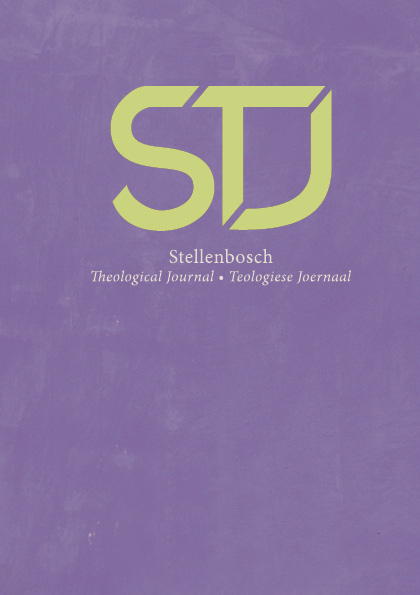“Staande, eenparig …”? Die aanvaarding van die kerkorde deur die NG Kerk in 1962.
'n Ondersoek van beduidende bronne
DOI:
https://doi.org/10.17570/stj.2022.v8n1.a14Keywords:
Concept Church Order 1959, Church Order of the Dutch Reformed Church, General Synod 1962, Church unity, Church Order of Dordt, W.D. JonkerAbstract
In 1962, the differentiated Dutch Reformed Churches of South Africa united in one General Synod. This was done on the basis of a mutual Church Order. The Dutch Reformed Church experienced this as a distinctive moment of significance in its history. The “Message to all the members of the Dutch Reformed Church” reflected the Synod’s complacency. The General Synod was envisioned as the new flagship of the Dutch Reformed Church, which at that time, was aware of the high flourishing in its existence and influence in the country. Functional value was assigned to the new church order. However, there was a small minority of pastors and theologians, most notably W.D. Jonker, who assessed the role of the Church Order differently. For them, it had to be an instrument to reform the Church, a document to bring its theology and ecclesiology to account. The Church Order could, for that matter, address the theological justification of a policy of separation. This article deals with the way in which the Church Order was accommodated in the pragmatic, functional theology of the Dutch Reformed Church. The opportunity to deploy it as a core document for the sake of reformation in the Church’s life was lost.
Published
How to Cite
Issue
Section
License
Copyright (c) 2023 Dolf Britz, Jaco Nel

This work is licensed under a Creative Commons Attribution 4.0 International License.
https://creativecommons.org/licenses/by/4.0/
Authors who publish with this journal agree to the following terms:
Authors retain copyright and grant the journal right of first publication with the work simultaneously licensed under a Creative Commons Attribution License that allows others to share the work with an acknowledgement of the work's authorship and initial publication in this journal.
Authors are able to enter into separate, additional contractual arrangements for the non-exclusive distribution of the journal's published version of the work (e.g., post it to an institutional repository or publish it in a book), with an acknowledgement of its initial publication in this journal.
Authors are permitted and encouraged to post their work online (e.g., in institutional repositories or on their website) prior to and during the submission process, as it can lead to productive exchanges, as well as earlier and greater citation of published work.
Please note that erroneous copyright information is given in the PDFs before Volume 9, 2023.



